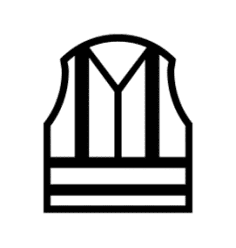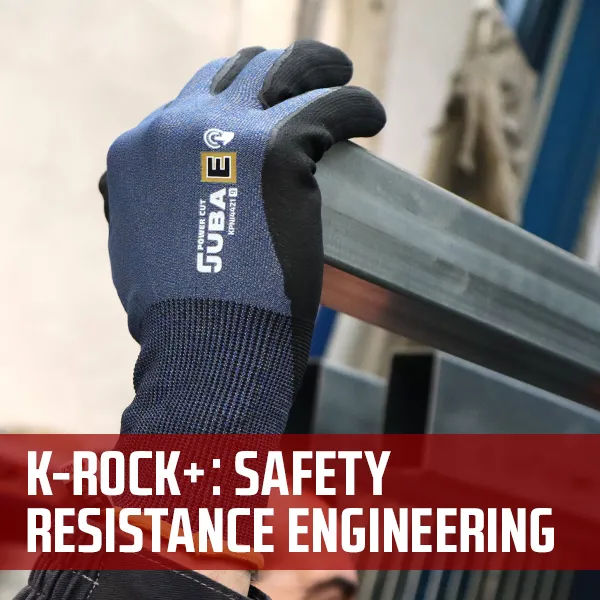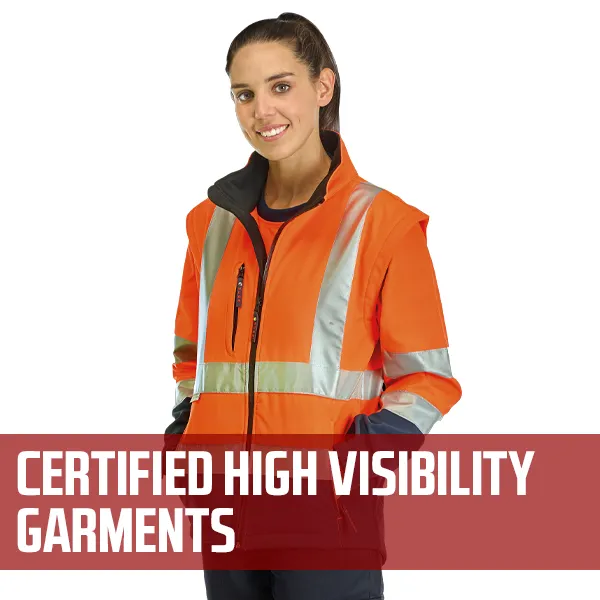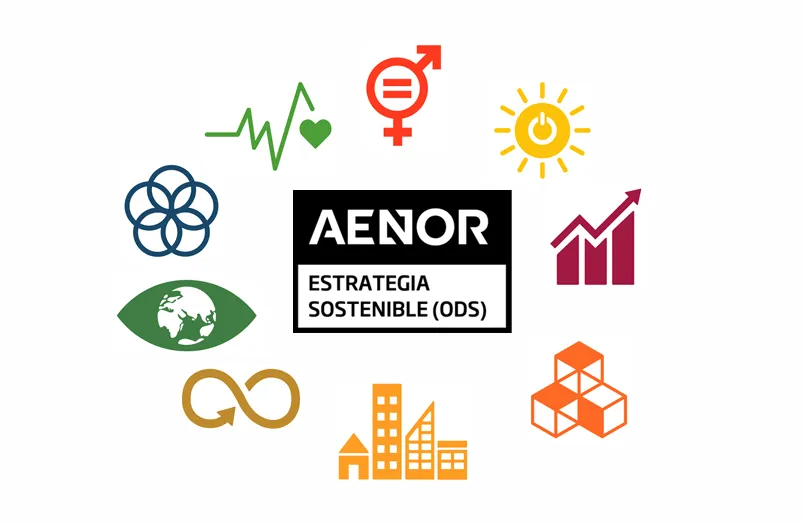Actualidad
Certifications and regulations for hi-visibility clothing

High visibility clothing is a signalling clothing that follows an official standard to regulate its characteristics and requirements, as well as the working conditions in which each available class must be used.
Importance of high visibility clothing
High-visibility clothing is designed to provide safety and protection for professionals in work situations where there is a risk due to low light and/or where professionals cannot be detected from certain angles, when using machinery or when driving vehicles.
In addition, high-visibility clothing is also recommended for some recreational or sporting activities in low-light areas (running, riding an electric scooter, cycling or walking, among others).
High visibility clothing regulations and certifications
High visibility clothing is regulated by specific standards and may also have different quality and safety certificates associated with it.
This information can be consulted in the descriptive sheet of each reference available at Juba.
Legal requirements in Spain
The standard governing high-visibility clothing in Europe is EN ISO 20471. This regulation identifies standards in terms of design, materials and performance of hi-visibility clothing and makes a classification, to specify the most suitable according to certain characteristics.
Quality and safety certificates
In addition to EN ISO 20471 standards, hi-visibility workwear must also have some relevant and other complementary certifications, depending on the risks inherent to each type of work.
Classification of high visibility clothing
The EN ISO 20471 standard for high visibility clothing distinguishes between three classes, each with specifications related to the working environment and the characteristics of the components that provide increased visibility, such as retro-reflective and fluorescent materials. Each class must have minimum surfaces of visible materials. The garments must consist of the required areas of background material and retro-reflective material.
In addition to EN ISO 13688, the pictogram must be indicated, and if the manufacturer indicates a maximum number of cleaning cycles, the number must be added to the marking.
The surface area should be measured on the smallest size available for the garment and with the garment closed.
EN ISO 20471:2013
 X: The number next to the pictogram indicates the class of the garment according to table 1 (class 1 to 3).
X: The number next to the pictogram indicates the class of the garment according to table 1 (class 1 to 3).
Class 1: minimum level
Class 1 high visibility clothing includes those garments required when risks are minimal. It is designed to enable professionals to be detected from vehicles travelling at speeds of less than 40 km/h.
Examples of workers wearing Class 1 garments are:
- Car park attendants.
- Staff removing shopping trolleys from shopping centre car parks.
- Workers exposed to traffic in warehouses.
- Pavement maintenance workers.
The regulations establish that the garments must include the following:
- 0.10 m2 of retro-reflective tape (reflective bands).
- 0.14 m2 of fluorescent background material.
- 0.20 m2 of combined material (fluorescent and reflective strips).
Class 2: intermediate level
Class 2 of high visibility clothing includes garments that offer intermediate visibility, so that professionals can be seen in adverse weather conditions and by vehicles or machinery travelling at a speed of no more than 80 km/h.
Examples of workers wearing Class 2 garments are:
- Forestry operations.
- Ship loading operations.
- Railway workers.
- School crossing guards.
- Delivery vehicle drivers.
- High volume car park staff.
- Toll plaza staff.
- Airport baggage handlers and tarmac crew.
- Refuse collectors and recycling operations.
- Accident investigators.
The characteristics of the high visibility material in these garments are as follows:
- 0.13 m2 of retroreflective tape (reflective bands).
- 0.50 m2 of fluorescent background material.
Class 3: high level
Class 3 high-visibility clothing has the highest concentration of these materials. It is used by emergency service professionals, as well as in places with road traffic travelling at over 80 km/h.
Examples of workers wearing Class 3 garments:
- Road construction and signalling personnel.
- Road inspection and maintenance personnel.
- Emergency and police personnel.
The material to be included is as follows:
- 0.20 m2 of retro-reflective tape (reflective strips).
- 0.80 m2 of fluorescent background material.
Requirements for high visibility clothing
- Ergonomics and comfort for the professional: Ergonomic factors, fit, size, comfort and degree of movement of the wearer must be correct.
- Class with ensembles: The protection class of a garment may be determined by a single piece or by the combination of several, such as a jacket and trousers. The highest class must be specified in the information leaflet and on the laundry label of both garments. For a garment to be classified as Class 3 - the highest in visibility - it must cover the torso and have long sleeves or long trousers.
- Logos: The presence of logos, lettering or labels may not interfere with or reduce the minimum area of visible material required. Retro-reflective stripes must be 5 cm wide and at least 5 cm apart, also maintaining a 5 cm separation from the bottom edge of the garment.
- Avoid diagonal stripes: It is recommended to avoid diagonal stripes, opting instead for horizontal and vertical stripe designs that offer greater visibility. Colour coordinates and luminance factors should comply with regulatory requirements to ensure proper visibility under different light conditions.
- Retroreflective stripe: If the sleeve impedes vision it should be surrounded by a retroreflective stripe.




